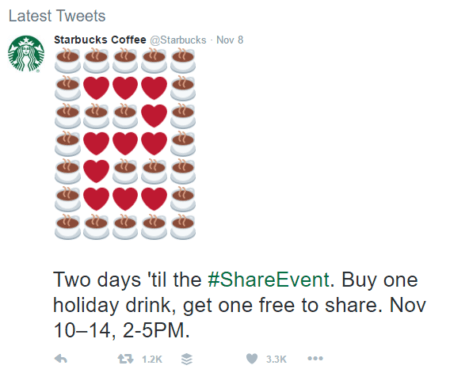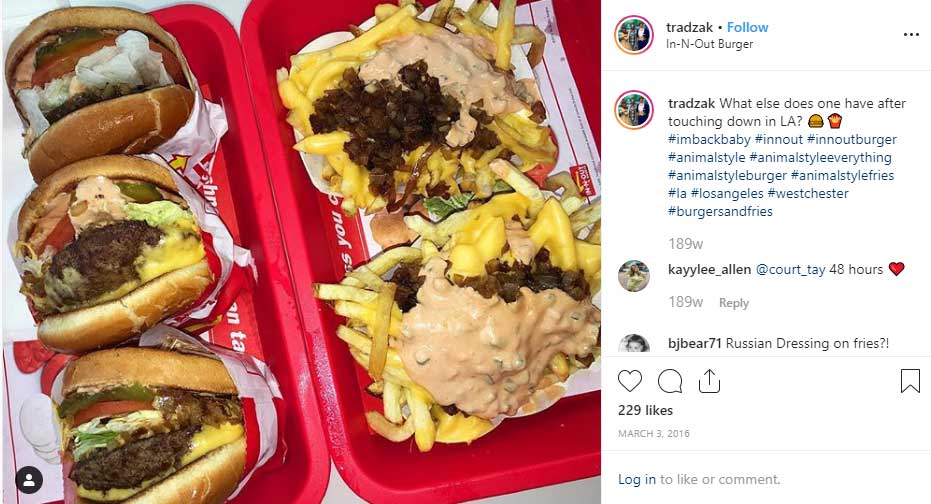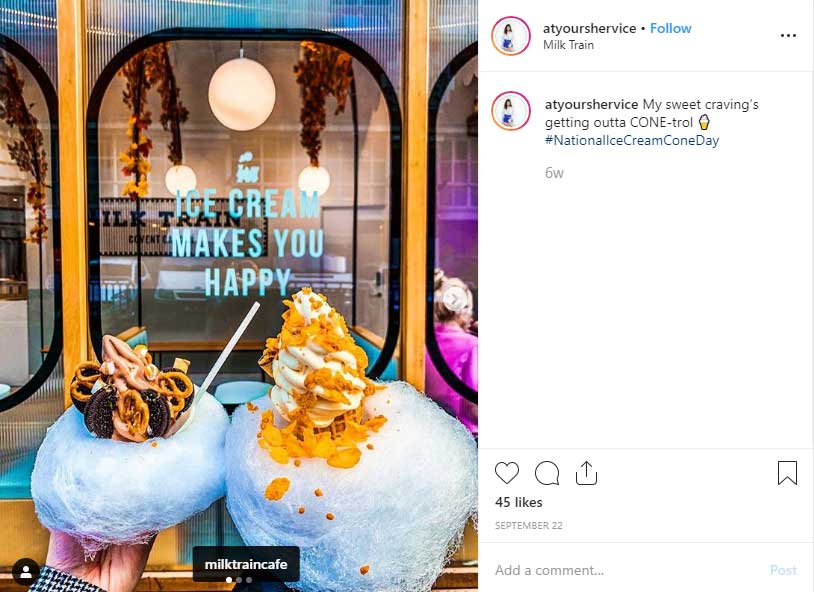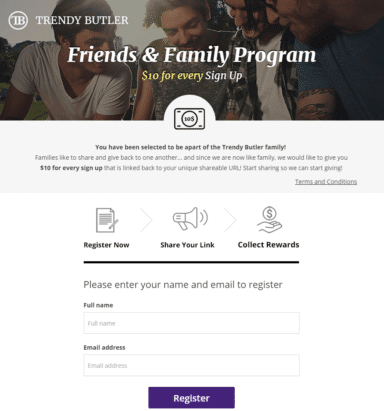Ever wonder why some brands have customers practically tattooing their logo on their bodies while others can barely get a second glance? Or why your friend won’t shut up about their favorite coffee shop but couldn’t care less about where they bank?
It all comes down to social currency—that magical quality that makes brands worth talking about at dinner parties. Knowing how to build social currency allows brands to drive higher customer loyalty and add to their social proof. This leads to more sales and referrals.
In this post, we’re diving into the secret sauce that turns regular customers into raving fans. Get ready to discover how building social currency can transform your business from “meh” to “Must Have!” and why it might be the missing piece in your growth strategy.
What is social currency?
Social currency is your influence on social networks, online and offline communities, and the degree by which your business is shared by others.
Essentially, it’s your brand’s VIP pass into customers’ conversations, their social feeds, and—most importantly—their recommendations to friends.
Are you creating moments worth sharing? Do people drop your brand name to sound in-the-know? Congrats! You’ve got social currency in the bank.
The journey from browser to buyer is pretty straightforward. But turning customers into megaphone-wielding advocates? That requires something extra—that something is social currency.
A study by Vivaldi Partners describes social currency as “the ability of brands to fit into how consumers manage their social lives in today’s digital and mobile age.” Social currency (or social capital) applies to the relationship between your business and consumers. If your business provides information and value to consumers, it is building social capital and solidifying its position in the market.
Here’s an overview of what social currency means to individuals and brands:
Social currency of individuals
People share what they think makes them look good. In other words, they’ll only share what they believe will maintain or boost their reputation in the eyes of their peers.
Whenever a person chooses to share information, they place their reputation on the line and “spend” social currency. They don’t want to share boring, irrelevant, or misleading information because they risk losing status among their peers.
Social currency of brands
All brands need social currency. It makes connecting with customers easier. And when you share interesting content with your audience, having social currency means that message will more likely be shared with others.
When someone shares your brand, they spend their social currency on you. And if others like what they see, then the social currency of both the sharer and your brand increases.
Of course, your brand should already be trusted and relatable. But with positive social capital, it will be easier to grow your brand awareness and a stronger relationship with your customers.
Social currency and brand loyalty
In the Vivaldi Partners study, social currency was shown to help drive brand loyalty. Brands with high social currency are also able to command premium prices.
Think about Apple. By building its social currency, the company doesn’t just lead smartphone sales by volume. It also commands a premium. Apple is able to charge some of the highest prices for its products, without any dip in its brand loyalty. The majority of Apple customers are loyal to the brand, and are always awaiting the company’s next release.
Similar to word-of-mouth marketing, social currency is a means to an end. You don’t just want customers to talk about your brand. You want them (and their friends) to buy.
The dimensions of social currency
How can you build social currency in a way that also drives revenue? Building social currency entails providing at least one of the following dimensions (or benefits) to your audience:
- Affiliation: Creating that “I belong here” feeling among your customers
- Conversation: Getting people talking about you (and not just when something goes wrong), plus joining in that conversation
- Utility: Creating value for customers that helps them look smarter (and cooler among peers)
- Advocacy: Developing ridiculous brand loyalty, to the point where customers will recommend your brand and defend it like it’s their firstborn
- Information: Sharing insider knowledge that makes customers feel like the smartest person in the room
- Identity: Helping customers express who they are through your brand
When planning your strategy, think about these dimensions. How can you make your product more shareable? What conversations can you spark?
If you can add a dimension of social currency to every interaction with your customers, it will help you deepen your customer relationship.
Let’s look at Apple—they don’t just sell phones; they sell social status. Their social currency investment is off the charts. Why can Apple charge more? Because they invested in their social currency:
- Utility: Apple doesn’t only deliver the functionality consumers want. It does so in a way that is easy and seamless for consumers. It focuses on providing the most friction-free user experience possible.
- Conversation: Their legendary product launches and events are practically national holidays for tech enthusiasts.
- Identity: Apple fans rallied around its “Think Different” cry. These days, Apple products represent a certain status or premium. Owning an Apple product says something about who you are (and your willingness to spend $1,200 on a phone).
Each dimension encourages Apple customers to stay loyal even when competitors offer similar functionality at half the price. And guess what? You don’t need Apple’s massive budget to apply these same principles.
The social currency bank account
Building your social currency can also make your referral marketing strategies more effective.
Think of social currency like your savings account. Before you can make a withdrawal (asking customers to refer you), you need to make some deposits.
If a customer doesn’t see your brand as having social capital, they’re not risking their reputation by recommending you. It’s that simple.
How do you make deposits and add to that social capital? Show up consistently on the social media platforms your audience uses, share content that makes them look good when they share it, and actually be worth talking about.
You don’t have to tackle all six dimensions at once—start by simply being a friend to your customers. Answer their questions. Thank them when they tag you. Every positive interaction is another deposit in your social currency account.
Every time you provide one of the six dimensions of social capital, you’re making a deposit into your social bank account. This account is what you’ll draw from when it’s time to ask for a referral or promotion.
Every customer responds to the dimensions differently. For example, if a customer usually follows the crowd, they’ll most likely respond well to affiliation. If another customer values utility, they’re more interested in a product to solve their problem.
6 benefits of social currency for your business
In time, you’ll start to notice several benefits that come with earning social currency:
1. Greater insight into your customers
Positive social capital deepens the relationship between your business and your customers. You’ll have a clearer view of what your customers want, what they don’t want, and any gaps in the market you can address. You’ll also see how customers perceive your brand, which allows you to manage your brand reputation.
2. Increased impact
Social currency helps increase the market value of your brand. When potential customers see others raving about you, they’ll trust you faster than any ad could accomplish.
3. Larger circle of influence
When a brand earns enough social currency, it becomes an influencer in its industry. It solidifies its position and gains even more leverage with other influencers.
4. Organic growth
When your social capital reaches a certain level, you experience a snowball effect – all the work you’ve done in the past will compound. Customers are already motivated to share the product or service with others. And if this happens through time at scale, you can expect a boom in customers and advocates for your brand.
5. Higher customer retention
Social currency drives the kind of loyalty that catapults you over other brands. For example, Target and Walmart offer many of the same products. But because Target has earned social capital through its social channels, the brand has a higher repurchase or loyalty rate over Wal-Mart.
6. Premium prices
If you’re trying to position your brand at a premium price point, social currency is a big help. Social currency changes the way customers perceive the value of a product, by adding something money can’t buy.
7. Better word of mouth
Building a brand your customers are proud to support not only increases social currency, it will also boost your word-of-mouth marketing. Brands with high social capital are more likely to be promoted and recommended by your existing customers. Customers proud to support you will shout your name from digital rooftops.
8. Larger amounts of higher-quality leads
All the above benefits add up to this final point – more leads. By now, your customers are primed to refer their friends and family to your business. This drives a steady stream of highly qualified leads, which results in exponential business growth.
10 ways to increase referrals with social currency
Want to increase the social currency of your business? We put together some top actionable strategies you can start using today. Below are several ideas to gain social capital with your customers.
1. Find influencers and brand ambassadors
When an influencer or brand ambassador promotes your company, you’re borrowing their social currency. After all, these individuals will only promote a brand they love and think offers value to their followers. Focus on finding representatives who resonate with your audience, and whose fans respect and trust them.
Influencer marketing and brand ambassador programs are one of the most effective ways to generate more social currency. Brand ambassador programs have also proven to help you grow your brand 10 times faster.
Social currency dimensions used: Affiliation, conversation, advocacy
2. Form a community
One of the most successful social currency strategies is to foster a sense of community. So, create spaces where your customers can connect over shared interests. This is especially true for your target customers. For example, If you sell organic cleaning products, start a Facebook group for non-toxic home enthusiasts. You’re not just selling spray bottles—you’re creating belonging.
Social currency dimensions used: Affiliation, advocacy, identity
3. Show what’s unique about you
What makes you different from every other option out there? That quirky approach to customer service or your founder’s unlikely story might be more valuable than your actual product features. Highlight those features in all of your marketing campaigns, and you’ll drive social capital and sharing.
Social currency dimensions used: Utility, affiliation, advocacy
4. Create explainer videos
It’s every brand’s dream to have the next viral video hit. While it’s hard to predict what will go viral, creating useful video content is a good place to start. A simple explainer or how-to video is always helpful for consumers. As long as you focus on valuable insights or tips, you can be sure your customers will be watching.
Social currency dimensions used: Utility, information, advocacy
5. Incentivize your advocates
92% of people trust recommendations from friends and family over any form of advertising, making referral programs one of the most effective ways to grow your business. However, referral programs need the right incentives to work. Consider offering coupons, vouchers, gift cards, or other proven referral rewards for your advocates. You can also give a shout out to your top referrers within your community.
Social currency dimensions used: Utility, advocacy, conversation, affiliation, identity
6. Launch an informational campaign
It’s always helpful to share key information with your customers. Developing knowledge bases, online learning portals, guidebooks, and other informational resources is a strong way to build your social capital.
Social currency dimensions used: Information, conversation
7. Use gamification
Consider adding game mechanics or competition structures in your marketing efforts. For example, you can invite customers to complete challenges, progress through levels, and earn points.
Gamification can easily be applied to a loyalty program or referral program. It can also be used in a promotional contest to create buzz around your brand (much more interesting than a traditional ad).
The fun and value customers get out of this style of marketing can further motivate them to share your brand. Just make sure you offer a way for them to easily share their achievements throughout the campaign.
Social currency dimensions used: Identity, affiliation, utility, advocacy
8. Create a sense of exclusivity
Share exclusive brand “secrets” with your most loyal customers – things that aren’t known by the general public. This can be a secret menu item, a members-only event, or a private sale.
No matter what the secret is, the offer of exclusive info raises your social capital among your select customers. This drives them to talk about your brand with their friends so they can all enjoy the same benefits. These friends, in turn, will also share with their friends, which gives your brand’s social currency a huge boost.
Social currency dimensions used: Utility, information
9. Optimize content for social media sharing
One of the easiest ways to boost your social currency is to create products and content optimized for social media sharing. Whether it’s a highly shareable product, an Instagrammable brand experience, a humorous Tweet, an on-trend brand video, this content can quickly boost your social capital. Just make sure to deliver what your audience wants, and stay true to your brand voice and tone.
Social currency dimensions used: Conversation, utility, affiliation
10. Put a face to your social capital efforts
Featuring your best customers is a great way to show them you appreciate their efforts, and helps form key identities within your community. In a referral program, for example, this may include highlighting your top-referring customers and new referrals.
Social currency dimensions used: Identity, advocacy
Whether you’re actively building social capital or not, many of the listed dimensions may already play a role in your brand strategy. They effectively help you form deeper relationships with customers, and complement any other growth and referral marketing strategies.
The result? Even more high-quality leads and referrals. Review your current marketing initiatives and look for other areas you can add to your social capital.
Social currency examples
Still wondering how to add social currency into your marketing efforts? We round up four great examples below:
Starbucks
This Tweet from Starbucks is #perfect. As you can see in the image below, they made a fun little countdown number (2) with hearts and coffee cup emojis – a nice visual to share, right?
They also created a limited time event, which gives the promotion a sense of urgency and exclusivity. You don’t want to miss out on sharing the love. The buy one, get one free (for a limited time) offer definitely got this post a good number of shares and likes.
In-N-Out
Ever had an Animal Style burger at In-N-Out? This item isn’t listed on the chain’s regular menu. Instead, Animal Style burgers (and fries) are part of the secret menu – so you had to learn about them through word-of-mouth before you could order. In-N-Out knows how to make people feel like insiders with their secrets, and drive up social currency. Regulars know that Animal Style is too good not to share, so they’re happy to pass the secret along!
Milk Train
Milk Train is an ice cream shop in the UK. And it knows how to create a totally Instagrammable experience with their “cloud” dessert – a combo of ice cream and cotton candy. Below is just one example of a social media-friendly food item that was tailor-made to drive up social currency. People like @atyourshervice can’t help but post!
Trendy Butler
Referral programs are one of the most effective ways to grow your customer base – all your customers know at least one other person who would love you. Trendy Butler gets that. They even named their campaign a “Friends & Family Program,” which emphasizes the exclusive list and makes you feel like you’re family. Who wouldn’t want to share?
Wrapping things up
Social currency isn’t just another marketing buzzword—it’s the difference between being forgettable and being unforgettable.
Whether you’re launching a single campaign or reimagining your entire brand strategy, focus on building experiences worth sharing, creating moments worth talking about, and delivering value that makes customers look good when they recommend you.
The best part? When you get social currency right, your customers do your marketing for you—and there’s no advertising more powerful than that.

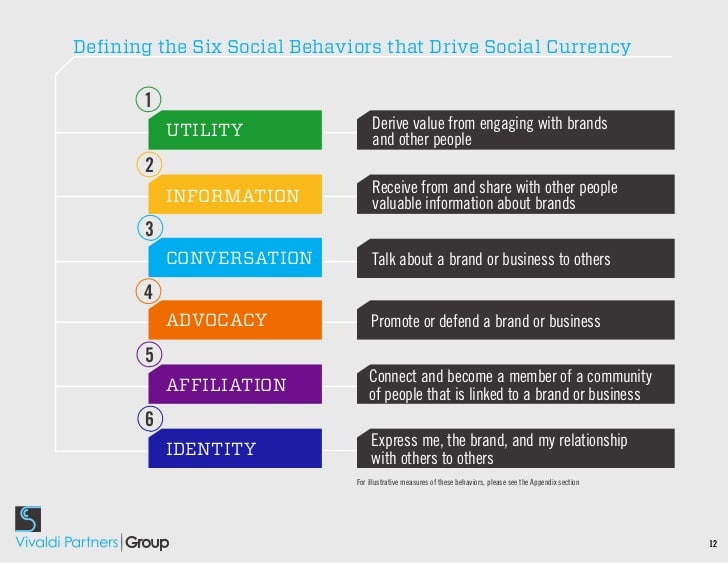
 Source
Source